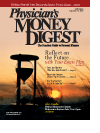Cardiac Care Found to Be Lacking
Are you giving your patients the best cardiaccare? Recent studies indicate that manypatients—particularly female patients—are not receiving the most current beneficial medications for their cardiac conditions.
Slow Use Increase
Journal of theAmerican College of Cardiology
One study published in theJanuary 2003 found that cardiac medicationsof proven benefit are beingunderutilized by physicians.Specifically, the study looked into recenttrends regarding outpatient use of warfarin in atrial fibrillation(AF), beta blockers and aspirin in coronaryartery disease (CAD), and angiotensin-convertingenzyme inhibitors (ACEIs) in congestive heart failure(CHF). While use of all these medications has increasedslowly and steadily over the past 10 years, too fewpatients are receiving them.
The research, conducted by Dr. Randall S. Staffordof the Palo Alto, Calif–based Stanford Center forResearch in Disease Prevention and David C. Radleyof Yale University, also revealed that the rate ofincreased use of some medications seems to be slowing.Note the following percentages of patients whoreceived the medications:
- Warfarin use in AF: 12% in 1990; 41% in 1995; 58% in 2001
- Beta blockers in CAD: 19% in 1990; 20% in 1995; 40% in 2001
- Aspirin use in CAD: 18% in 1990; 19% in 1995; 38% in 2001
- ACEIs in CHF: 24% in 1990; 36% in 1996; 39% in 2001
According to Reuters, a related editorial cautionedthat not all patients with these cardiac conditionsshould actually be taking the new medications. Yet thestudy's authors insist that, regardless of this factor,many patients who should be receiving the drugs arenot. "Although use is increasing, it remains lowerthan expected," they noted.
Women's Health
Annals of Internal Medicine
Another recent study focusing exclusively onwomen found similar results. Published in the January21 , it examined 2763women with known CAD and found that half orfewer were taking beta blockers, ACEIs, or other cholesterol-lowering agents. Eleven risk factors werefound among the 361 women who had a heart attackor died of coronary disease during follow-up. The riskfactors included more than 1 previous heart attack,kidney dysfunction, diabetes, angina, heart failure,lack of exercise, uncontrolled high blood pressure,abnormal cholesterol levels, and nonwhite ethnicity.Women with 5 or more risk factors had a rate of coronaryevents of 8.7% per year, while women with norisk factors had a rate of 1.3% per year.
As a result, the study's authors concluded,"Established drugs for secondary prevention, includingaspirin, beta blockers, and lipid-lowering agents,are underused in these women—especially those withhighest risk." An editorial on the study by Drs.Andrew Miller and Suzanne Oparil from theUniversity of Alabama at Birmingham said the resultsshow an "alarming underuse of proven therapies"and "highlight a terrible discrepancy between whatwe know and how we treat our sisters and mothers."
Costly Disease
Health Affairs
In yet a third study published in the March/April2003 , heart disease was found to be themost expensive medical condition overall in 1997. At$58 billion in expenditures, heart disease accountedfor about 10% of total expenditures in 1997.However, interestingly, a breakdown of expensesshows that medications are just 9% of the cost oftreatment, compared with nearly 66% for inpatientcare. The study was done by the Agency forHealthcare Research and Quality, a division of the USDepartment of Health and Human Services, andlooked at the 15 most costly medical conditions.
